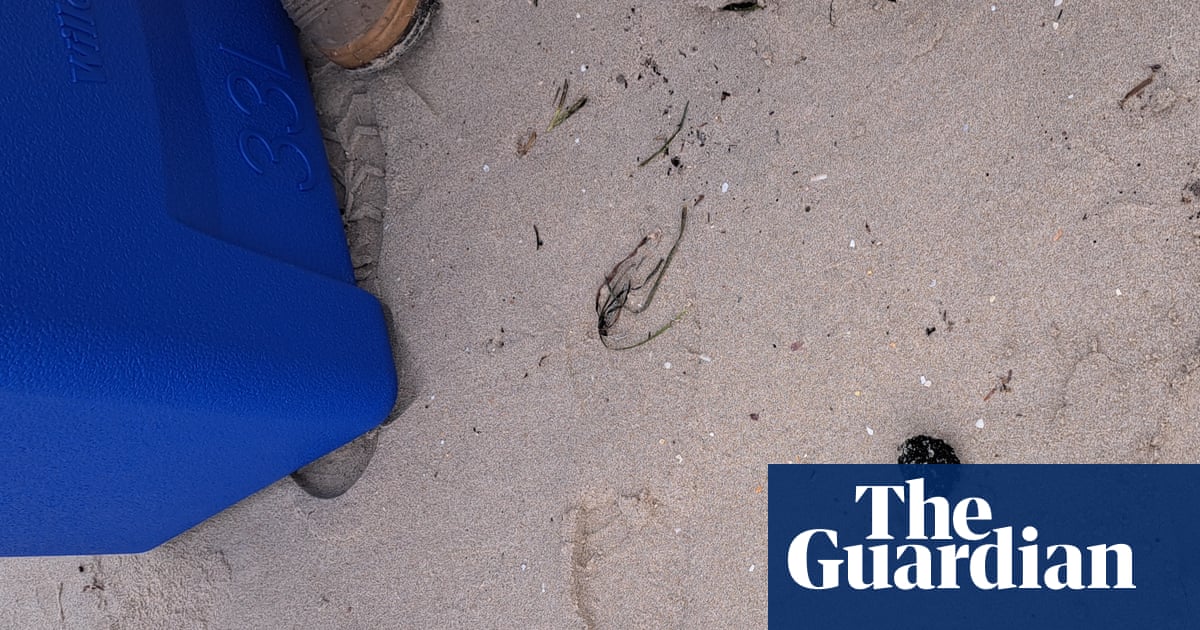Mysterious green, grey and black balls have washed up on a beach in Kurnell, in Sydneyâs south, with beachgoers warned to avoid the area.
Authorities said the âball-shaped debrisâ washed up along the eastern end of Silver beach on Tuesday.
Sutherland Shire council was leading the clean-up after a local resident alerted the New South Wales Environment Protection Authority (EPA).
Council installed warning signs on the beachfront advising of the suspected contamination. Beachgoers were advised not to enter the beach until the clean-up was completed.
The NSW Greens said on Thursday the EPA didnât appear âany closerâ to discovering the source of the debris washing up on Sydneyâs beaches.
âThe EPA canât explain the source of the human waste causing the fatbergs and it canât assure the public that Sydneyâs beaches are safe to use,â the partyâs environment spokesperson, Sue Higginson, said in a statement.
âIf our waste system is leaking sewage into the environment and onto our beaches, this should be a priority issue to resolve. This spate of human waste being washed up on beaches seems to be a red flag that we could be losing significant quantities of wastewater [from aged and cracked pipes] and we donât even know about it.â
Sutherland council said the discovery of the mystery balls at Kurnell was limited to a small section of the beach but it was monitoring the situation.
âWhile the spread of debris is limited to the Botany Bay-facing Silver beach at present, council will continue to monitor other local beaches to ensure this debris is not affecting other areas of our coastline,â the statement said.
âCouncil wishes to thank local residents for their patience and understanding while we work to remove all debris and ensure local residents and visitors to the area can once again enjoy this scenic stretch of Sutherland Shireâs coastline.â
The EPA collected samples of the debris which were being tested and compared to black balls discovered along beaches in eastern Sydney in October.
They were initially thought to be tar balls but later found to be âfatbergsâ made up of organic and inorganic matter, including human faeces, motor oil, hair, food waste, animal matter and wastewater bacteria.
Jon Beves, an associate professor at the University of NSW, said those balls were âconsistent with human-generated waste, like the types of things you would find from domestic waste in a regular sewerâ.
after newsletter promotion
In early November, Sydney Water said âthere have been no issues with the normal operations of the Bondi or Malabar wastewater treatment plantsâ.
The EPA on Thursday described the Kurnell debris as varying âin size, shape and colour with some rounded and golf ball size while larger ones are more irregular in shapeâ.
âThey range in colour from whitish or pale through green, grey and black,â the authority said.
âEPA officers collected samples for analysis which will be tested and compared to others found in the last two months. This is a much smaller event than the incident in Sydneyâs eastern suburbs in October, with fewer balls over a smaller area.â
Officers from the EPA, the National Parks and Wildlife Service and Sutherland Shire council inspected nearby beaches without finding further balls.
Sydney Water officers found a number of balls across Botany Bay at Dolls Point beach which were cleaned up.
The EPA said on Thursday it had finalised testing on the black balls that washed up in the eastern suburbs in October â which confirmed earlier results that indicated their origin was âlikely a source that releases mixed wasteâ.
âExperts could not determine where the balls originated from as no source samples were available for comparison,â the EPA said.
The EPA also said it was awaiting results of testing on debris balls which washed up in Kiama in November.
Sydney Water was contacted for comment.



